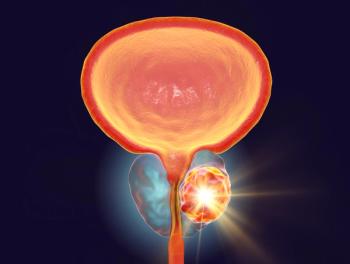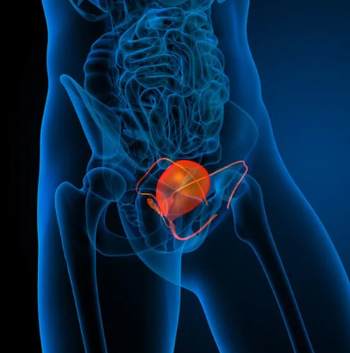
- ONCOLOGY Vol 12 No 8
- Volume 12
- Issue 8
Genetic Switch May Yield Map of Prostate Cancer Machinery
A team of molecular biologists have located a genetic switch in prostate cancer cells that may play a role in triggering a quiescent tumor to erupt into an invasive, deadly cancer.
A team of molecular biologists have located a genetic switch in prostate cancer cells that may play a role in triggering a quiescent tumor to erupt into an invasive, deadly cancer.
The discovery of this single genetic switch could open a research pathway that might lead to a road map of the complex changes prostate cancer cells undergo as they progress to a deadly form, according to the scientists. Such a road map not only would yield molecular markers that would allow physicians to better pinpoint the stage of a prostate cancer but also could lead to new drugs to kill cancer cells at earlier stages, they said.
The scientists, Russ Carstens, MD and Mariano Garcia-Blanco, MD, PhD, of Duke University Medical Center, department of pharmacology and cancer biology, and Wallace McKeehan of Texas A&M published their findings in the April issue of Molecular and Cellular Biology.
Working with rat prostate cancer cells, the researchers discovered the molecular basis of a genetic switch that governs whether a cancer cell generates one or another form of a protein receptor molecule called fibroblast growth factor receptor-2 (FGF-R2). These receptors are molecular locks, secreted by another cell in the prostate, into which a protein called a growth factor fits.
As long as the FGF-R2 receptor is of one type--called IIIb--the cancer cell is relatively well-behaved. But when the cancer cell abruptly switches over to making another receptor type, called IIIc, it needs no outside stimulation to grow, and grows uncontrollably.
This phenomenon was originally observed by Dr. McKeehan. The Duke researchers subsequently began exploring its molecular mechanism. They discovered the switch has a short stretch of RNA nestled in the string of messenger RNA, a molecule which constitutes the blueprint for the receptor and which moves out of the cells nucleus to the protein-making machinery, where it governs production of FGF-R2.
"Alternative Splicing"
The scientists found that this string of messenger RNA actually includes the code for producing both receptor IIIb and IIIc, with the genetic switch sitting between the two lengths of RNA code. That switch acts as a molecular "scissors" to activate one form of FGF-R2, while suppressing another.
The phenomenon is called "alternative splicing," said Dr. Garcia-Blanco, an associate professor. "Alternative splicing is quite similar to the process of editing film," continued Dr. Garcia-Blanco. "An editor, starting from the raw footage, can decide to cut one scene and not another, possibly producing two very different films."
He emphasized that "we dont know yet for a fact whether this switch in the receptor is critical for either androgen-independence or metastasis, or whether its just a marker. But even if it is a marker, it could still be useful as a very early signal of tumor progression." However, he asserted that this mechanism "has a very good chance of being an important enabling component in the progression to metastasis and/or androgen independence."
"The stages in prostate cancer that lead to the development of very highly metastatic and androgen-independent tumors are not well characterized," he added. "So, this finding can help us to better understand what other genetic lesions are necessary for the cancer to progress." The finding is unique, said Dr. Garcia-Blanco, because aberrant gene expression in cancer usually occurs as a result of genetic mistakes in producing messenger RNA in the nucleus and not because of alternative splicing of the RNA into one form or another.
Future Research to Focus on How the RNA Switch Is Controlled
The researchers next goal is to expand on this initial clue to understand how the RNA switch itself is controlled and, ultimately, to use this information to broadly map the deadly machinery of prostate cancer.
"While we think this switch has tremendous physiological consequences, because it affects this fundamental receptor, we now want to know why the switch is being tripped," said Dr. Garcia-Blanco. "And whatever protein is triggering this switch, we believe, could affect many other parts of the cell machinery that go awry as the tumor progresses."
Articles in this issue
over 27 years ago
CD-ROM Helps Cancer Patients Ease the Painover 27 years ago
UT Southwestern and Komen Foundation Offer Breast Care Fellowshipover 27 years ago
Controversies in the Management of Stage I Seminomaover 27 years ago
Personalized Approach Increases Breast Cancer Screening RatesNewsletter
Stay up to date on recent advances in the multidisciplinary approach to cancer.

















































































